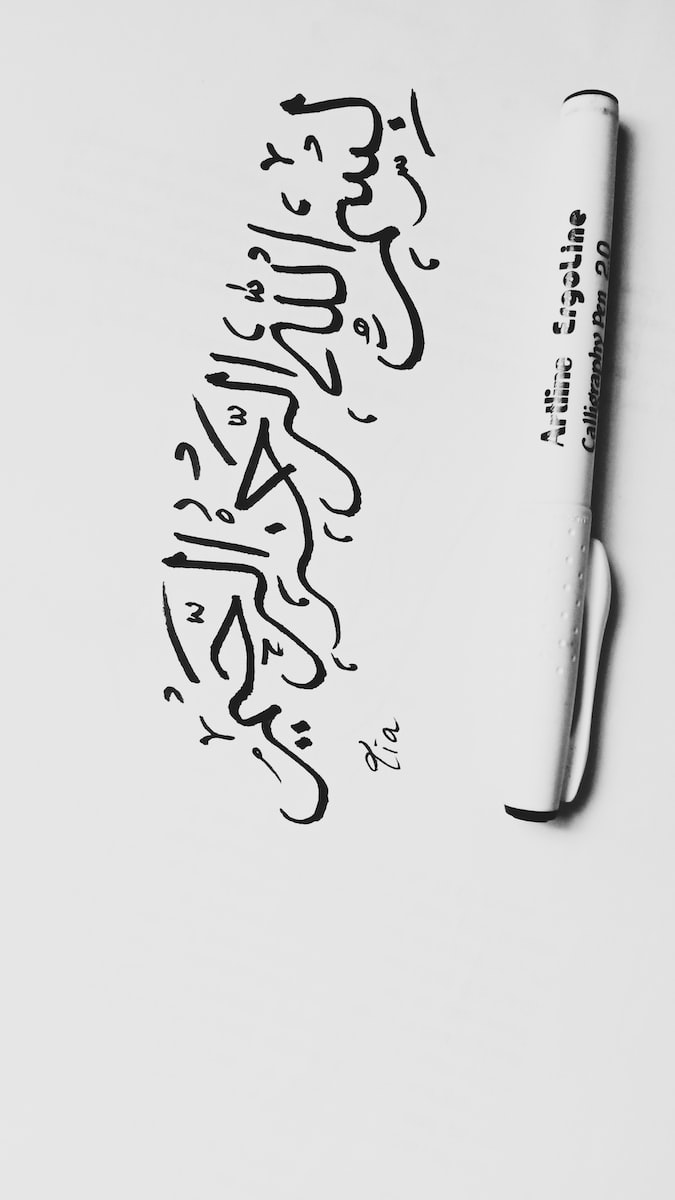Arabic calligraphy is more than just a beautiful form of art; it also has a long and deep-rooted cultural and spiritual significance in many parts of the world. Calligraphy is widely used to transmit divine messages and preserve human knowledge, having been employed to transcribe religious texts, adorn buildings, and even decorate online games. From the elegant curves and glyphs of Kufic to the decorative and ornamental styles of Maghribi, each script has its own history and special calligraphy. In this article, we will delve into more details about this beautiful art form.
Brief History of Arabic Calligraphy
Arabic calligraphy has been long practiced in North Africa and the Middle East for more than a millennium. Originally, the Arabic tribes memorized poems and different texts. Later on, the first Muslims attempted to document the Qur’an Kareem, their holy book, with the help of a number of different scripts with complex shapes.
Kufic was one of their favorite scripts and it also represents one of the earliest examples of a universally adopted calligraphic style used for the transcription of important religious text.
While working on the texts, their scripts became more and more beautiful and complicated, reflecting the different timeframes when they were created and the locations where they were born. Given the constantly expanding Islamic Empire, many Arabic scripts emerged over the centuries. Each of them has its own history and special calligraphy that evolved nicely over the history of the empire. One fine example would be the popular Maghribi script, which displays the amazing artwork and inscriptions of part of the northwestern part of Africa.
Interesting Use Of Arabic Calligraphy
No matter the original intent behind them, these scripts are remarkable for the way they can expand our visual experience. From elegant curves and glyphs to a plethora of decorative and ornamental styles, there is much to admire about this special form of calligraphy. It has been used for a wide range of purposes, from books and manuscripts to monuments and mosques, and its influence can even be seen in the designs and themes of certain games.
Disseminating Divine Messages and Safeguarding Human Wisdom
For centuries, Arabic calligraphy has been employed to immortalize the word of God in religious manuscripts, adorn the walls and ceilings of mosques, and be crafted onto wall décor. It is also used to preserve human knowledge and express abstract concepts through art and typography. To achieve this, skilled calligraphers use pens and inks to create the intricate and beautiful Arabic alphabet we know today. Arabic calligraphy remains a significant part of Islamic culture, with its letters and designs being used to convey religious and secular ideas in books, magazines, and other digital media.
Arabic Calligraphy Online
In recent years, the use of Arabic calligraphy can also be found at online gaming sites in the Middle East. Players in these regions can now enjoy a wide selection of games, with titles that feature the colorful and detailed imagery of Arabic calligraphy. From slots that embrace an Arabian Nights theme to others that feature symbols and mosaics inspired by Persian treasures, there are many options available for those looking for a unique and immersive gaming experience.
Arabic Calligraphy in Islamic Architecture.
Arabic calligraphy is an important and integral part of Islamic architecture. Calligraphy is used to decorate mosques, palaces, and other buildings in the Arab world. In Islamic architecture, Arabic calligraphy is used to add beauty and spiritual significance to the buildings. It is believed that the written word carries power and that it can be used to evoke spiritual feelings and invoke divine energy.
Final Thoughts
Arabic calligraphy is a long-standing tradition with a deep cultural and spiritual importance to the Arab world. Its intricate and varied styles have been used to transcribe religious texts, decorate buildings, and even online. Its ability to immortalize the word of God and preserve human knowledge has been recognized internationally, with UNESCO including it in its Lists of Intangible Cultural Heritage and Saudi Arabia extending the Year of Arabic Calligraphy into 2021. As a form of art and expression, Arabic calligraphy is celebrated and admired around the world.

